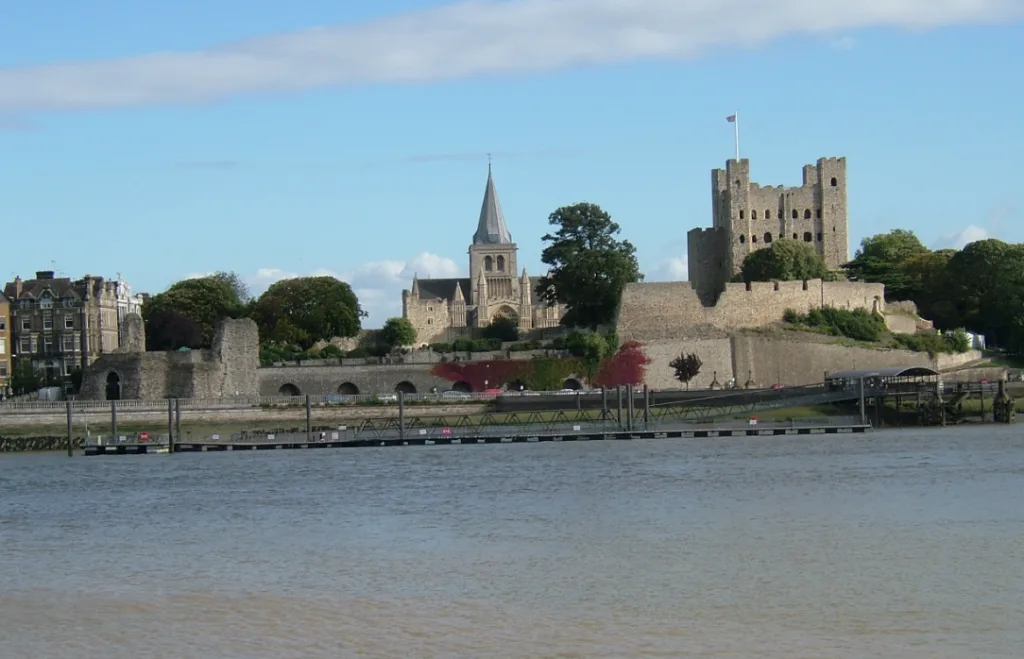This great fortification is one of the most strategic castles in English history.
In this post, we’ll take a closer look at some of the most interesting facts about Rochester Castle.
1. Rochester Castle has a strategic location
Rochester is a town located in Kent, in the southeast of England. This is the exact area that was used to invade England in the Middle Ages, and therefore, this royal castle served as the first line of defense to protect the southeast coast of England.
The castle stands on the east bank of the River Medway in a loop of the river, which is similar to the location of Warkworth Castle in Northumberland.
It’s also built along Watling Street, a route that was first paved by the Romans. This road ran from southeast England all the way to “Viroconium,” a Roman town in the area of Wroxeter, a small village just west of Birmingham.
This road is now known as the “Great Dover Road” and starts as another important castle that was referred to as “the key to England,” Dover Castle.

2. Rochester Castle dates back to the 11th century
The first castle in the area which is now referred to as “Boley Hill” was built in the aftermath of the Norman Conquest of England in 1066.
One of the most interesting facts about Rochester Castle is that this initial castle only played one prominent role before it was abandoned.
The original castle was given to Bishop Odo of Bayeux, the half-brother of William the Conqueror, who probably commissioned the famous Bayeux Tapestry.

After William died in September 1087, he divided his territories between his two sons who subsequently fell into disagreement.
William Rufus, the youngest of the two sons became King of England, but this wasn’t to the liking of Robert Curthose, the other son, who had become Duke of Normandy.
Bishop Odo supported Robert’s cause in an attempt to claim the throne of England and therefore reunite Normandy and England.
To no avail as the original castle was successfully besieged in May 1088.
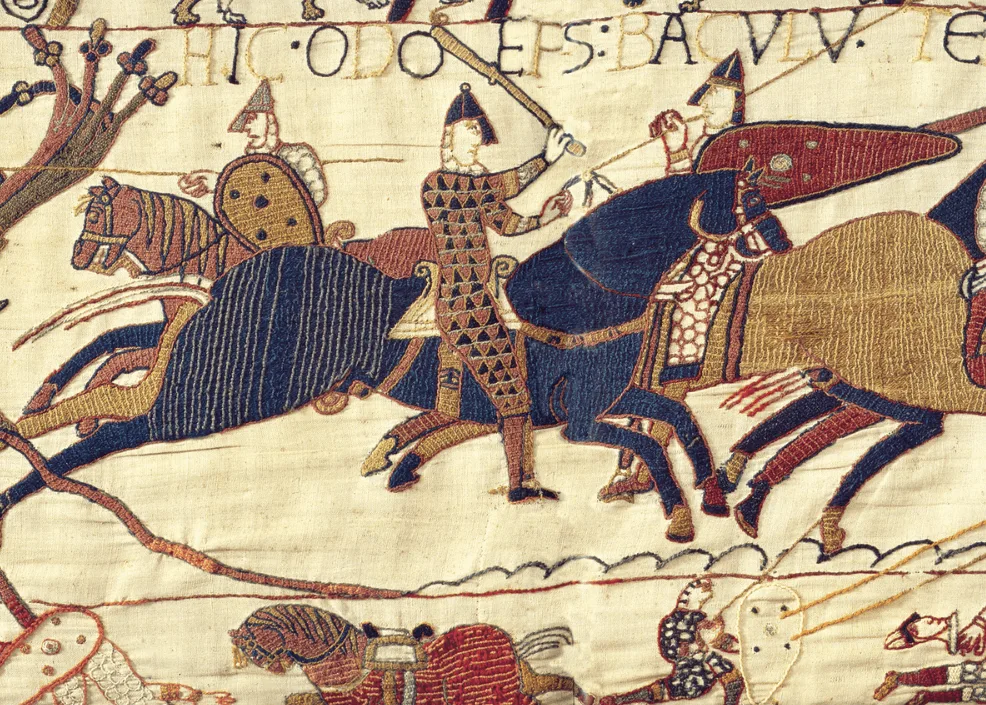
3. The Bishop of Rochester built the first stone castle
After the siege, the original castle was instantly abandoned and William Rufus demanded £100 from the Bishop of Rochester, Gundulf (1024-1108), to reclaim ownership of the manor he was given by William the Conqueror.
This was obviously too much, and as a compromise, he promised to build a fortified stone castle that would help to protect the southeast coast of England from invasion.
This stone castle was built directly after the siege had ended in the late 1080s.

4. It was built on the current location of the castle
The castle that Bishop Gundulf built cost about £60, which is the equivalent of over £120,000 today while keeping inflation in mind.
The castle was built adjacent to Rochester Cathedral, which was also owned by the Bishop of Rochester. This fact makes it one of the best examples of a closely linked castle and religious building.

5. A part of Gundulf’s castle survives today
One of the most remarkable facts about Rochester Castle is that some of the old structures, originally built by Bishop Gundulf of Rochester, still survive today.
One of those structures that survived from the early 12th century is the fortification commissioned by the King, the Western Curtain Wall all alongside the river.

6. Gundulf was a great architect
Gundulf of Rochester was not just a Bishop, but also a very well-respected architect. In fact, he was one of the most prominent architects of William the Conqueror.
Apart from building Rochester Castle and restoring the Cathedral of Rochester, he was also the one overseeing the construction of the White Tower, which is the central tower, and the old keep of the Tower of London which opened in the year 1097.
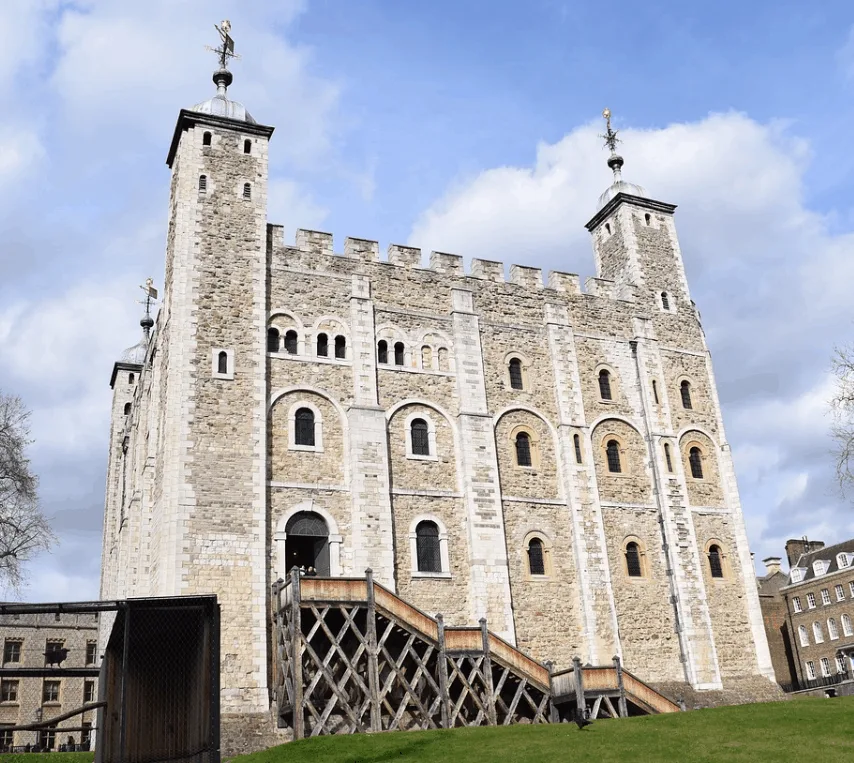
7. The keep was built shortly after the wall
One of the most prominent features of the castle is its keep. Unlike many other castles, the keep was one of the first things to be built after Gundulf fortified the castle.
King Henry I had granted the Bishop of Canterbury, William de Corbeil, the Castle and allowed him to fortify it with a stone keep. This happened in the year 1127.
The keep of Rochester Castle is one of the oldest and best-preserved medieval keeps in all of England and France!
The keep has a total height of 113 feet (34 meters).

8. When was the keep completed?
It’s not known exactly when the keep of the castle was completed. What we do know is that its construction advanced at about 10 feet (3 meters) per year and that it was definitely completed in 1141, and most probably even before Corbeil died in the year 1138.
The keep became one of the most important symbols of Rochester. To emphasize its importance, it even got added to the town’s seal in the 13th century.
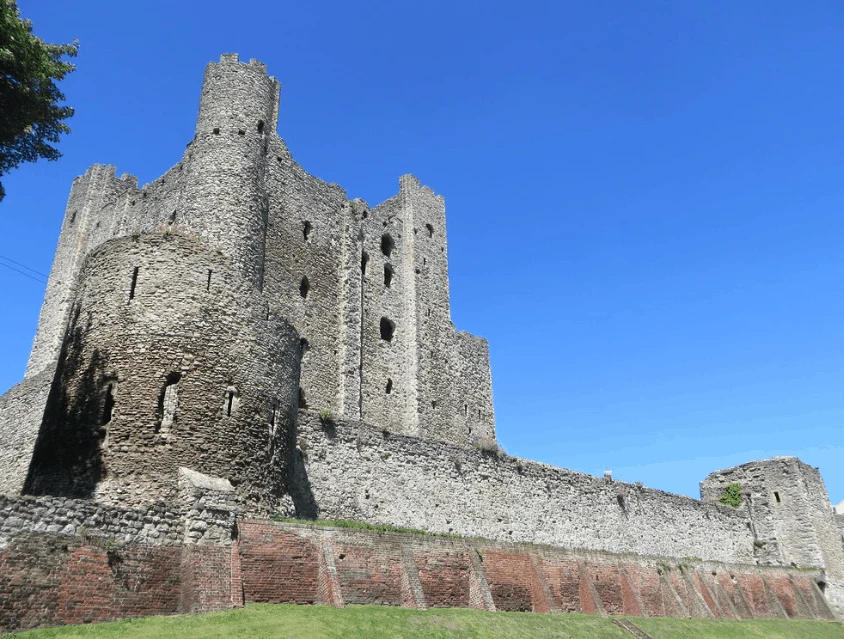
9. The castle got another serious upgrade
In the early 13th century, King John as becoming increasingly worried about an invasion of the French. This happened after the fall of Normandy in the year 1204 to the French forces of King Philippe II.
Shortly after, the king decided to spend about £115, which was double the amount the castle cost to build in the first place, on the reinforcement of the castle. This included ditches, an enhanced defensive wall, and an upgrade of the castle’s keep.
Rochester Castle became one of the most important castles to defend the southeast coast of England in the early 13th century.

10. King John besieged his own castle in 1215
In a strange turn of events, King John found himself besieging the castle he fortified himself in 1215. It turned out the French weren’t the only people he should have feared.
Just before the siege, the barons in the north of England turned their back against their king and after a peace treaty signed in June of the year 1215 failed, rebels managed to take control of Rochester Castle.
King John head over the Rochester in October of the same year, entered the city by surprise, tore down the bridge to avoid reinforcements from London to come, and besieged the castle.
The royal forces were able to mine their way through the outer wall and eventually the southeast wall of the keep where the rebels were now hiding. When starvation kicked in, the rebels that took over the castle surrendered.
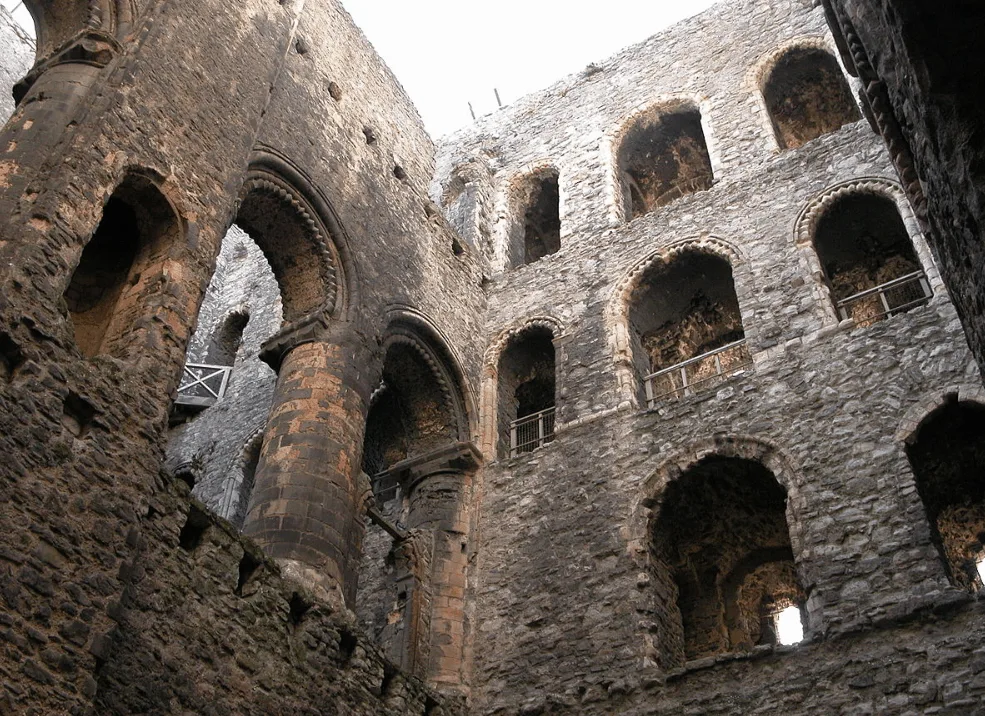
11. The repair of the castle cost much more than its fortification
King John wasn’t able to fully enjoy his successful siege because he died the year after in 1216. His son Henry was only 9 years old when he became King of England, referred to as Henry III.
Between 1217 and 1237, about £680 was spent on renovations of the castle and the keep, as well as adding a huge complex of residential buildings inside the bailey.
because of these extensive renovations, the castle became one of the favorite spots for the royal family halfway through the 13th century, who visited it frequently.

12. Another siege saw the castle destroyed in 1264
The happy days of family visits were permanently over for the royal household after a siege, under the command of Simon de Montfort, Earl of Leicester, and barons rebelling against the king in 1264.
Many structures of the castle were burned including the King’s hall and many other residential buildings in the bailey.
The rebels weren’t able to take the keep though and were forced out of Rochester after a relief force from the king arrived. This garrison was subsequently defeated, and no restoration was done to the destroyed castle this time.

13. The castle deteriorated for over a century
After the siege of 1264, the castle was basically left to the elements, which meant it was turned into a ruin that couldn’t serve as a royal residence anymore.
Apart from being used for administrative purposes and barracks, the castle was pretty much worthless as anything else.
The first major renovation came again because of attacks on the southeast coast of England by the French during the Hundred Years’ War. Richard II invested £500 for renovations and built a tower on the north end of the castle which served as a lookout towards the bridge over the River Medway.
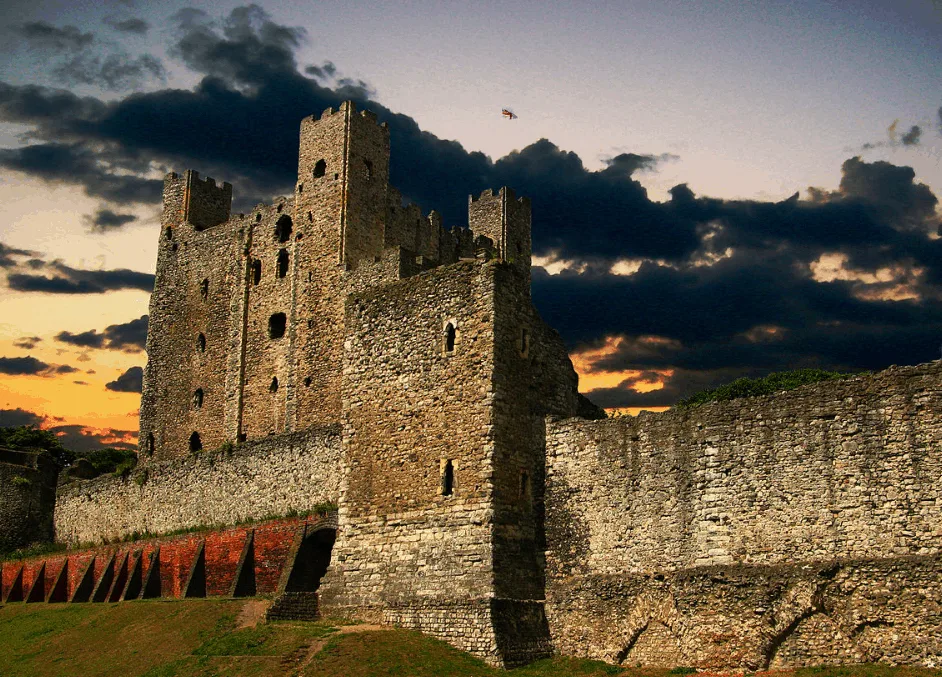
14. The castle played no role in the British Civil War
After the final work to somewhat renovate the crumbling castle, nothing really happened in the upcoming centuries.
Queen Elizabeth even ordered in the second half of the 16th century for the stones of the outer curtain wall to be removed to build a new castle at Upnor.
Even though the Royalists captured Rochester in 1648, there was no sign of any fighting at the castle itself, which kind of proved that the castle had become absolutely redundant by this time.
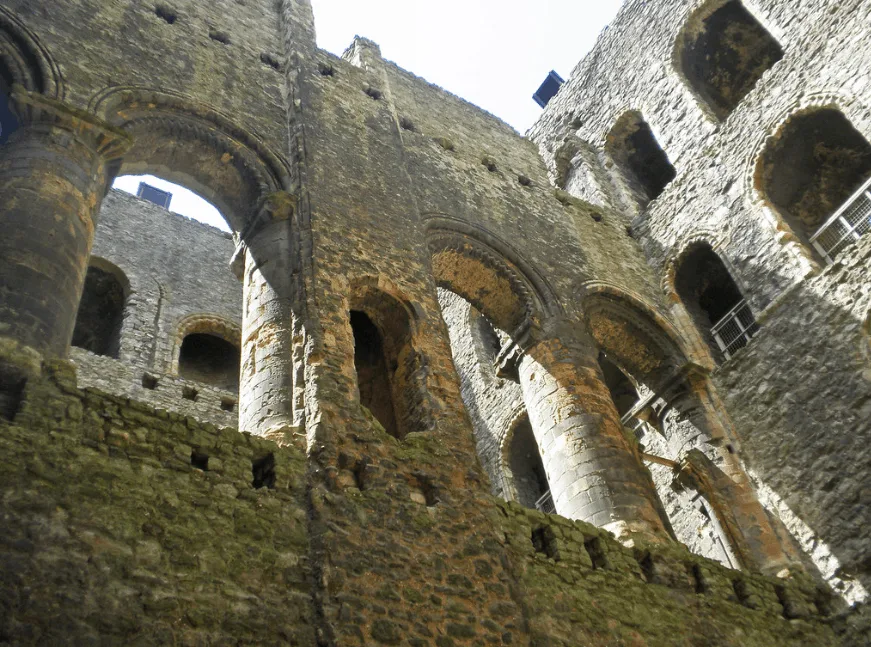
15. The castle’s ruin became a tourist attraction
By the 17th century, many of the English castles now lay in ruins, which actually meant they started serving another purpose: tourism!
Samuel Pepys wrote about the condition of Rochester Castle in one of his diaries in the 17th century, and so did Charles Dickens in the 19th century. Dickens described the amazing view he had from the top of the keep for example.
Charles Dickens also made one of the characters in one of his books describe the castle as:
glorious pile – frowning wall – tottering arches – dark nooks – crumbling stones.
The castle described in one of Charles Dickens’ books.
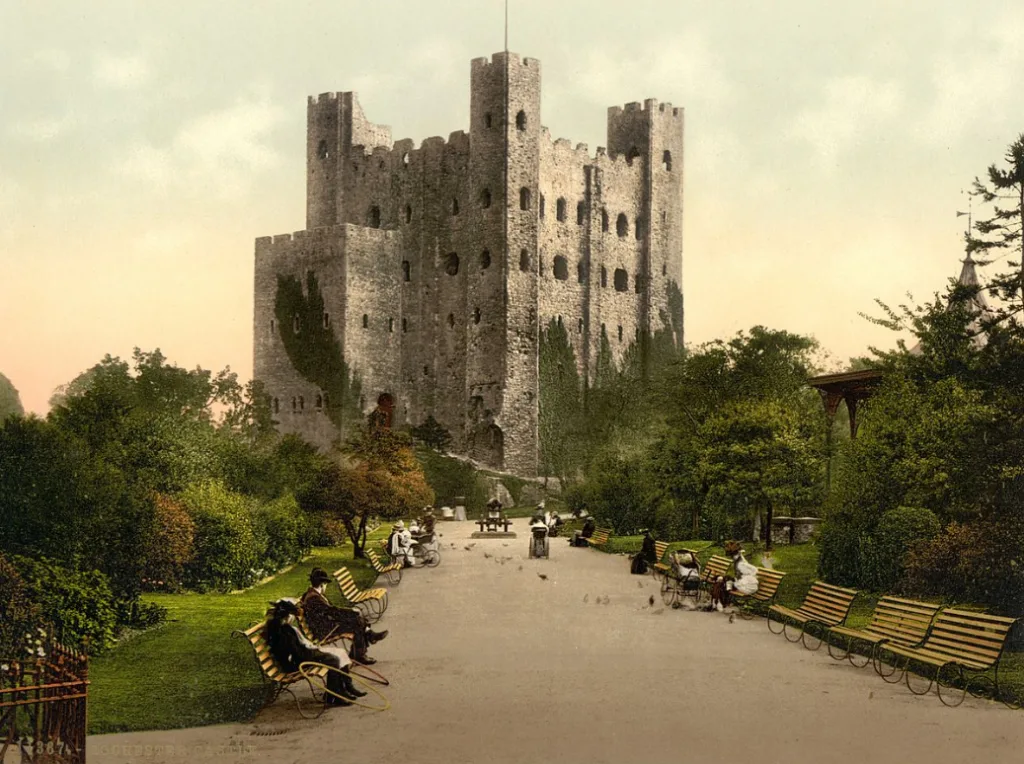
16. The Corporation of Rochester bought the castle
More attempts to preserve the castle were being done in the 19th century. Some repairs were made and in 1870, the castle was leased by the “Corporation of Rochester,” who intended to restore the castle and open it as a public park.
The Corporation that leased the castle eventually bought it in 1884 for £6,572 (the equivalent of over £3.5 million today) and got really serious with renovations afterward.
The castle and its gardens were transformed from a ruin into an amazing place to spend a nice afternoon!

17. The castle is a Scheduled Monument
The Ministry of Public Building and Works took over guardianship of the castle from the Corporation of Rochester in 1965 and subsequently did the same when English Heritage took over in 1984.
Since 1995, however, the caste is being managed by the City of Rochester and is both a Scheduled Monument and a Grade I listed building that is open to the public.
This means the castle is a “nationally important historic building and archaeological site which has been given protection against unauthorized change.”
